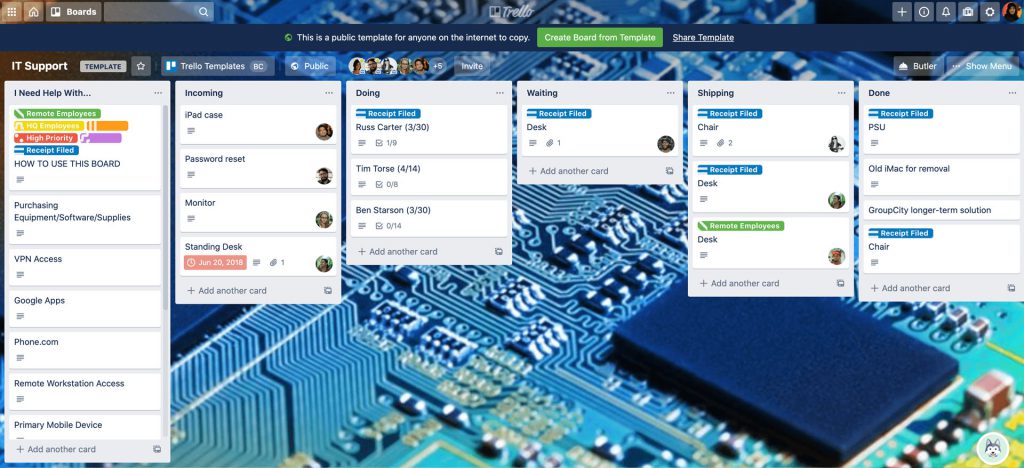Have you ever heard of Node.js? You probably have, but we will make a quick introduction and explain why you should know about it and, most importantly, why you should use it.

Today’s requirements for consuming real-time information and content are unprecedented. The social need to have a quick, effective app has been closely prioritized to food and water. Node.js is uniquely efficient and fast in response to multi-user real-time situations.
According to its official website, Node.js® is a JavaScript runtime built on Chrome’s V8 JavaScript engine.
Node.js was created in 2009 by developer Ryan Dahl. He and the original developers of JavaScript decided to extend it from something that only ran in the browser to something that could run on a standalone application.
Node.js is a cross-platform runtime environment built on V8 (an open-source JS engine with extremely high performance) to assure excellent execution.
Its work reflects it! It has many advantages in the development industry because it allows building fast, trustworthy network applications, faster development, and many benefits performance-wise.
It all starts with JavaScript
JavaScript capacity has grown far from just making websites interactive and has evolved with Node.js, keeping its relevance and still producing outstanding contributions to the industry, just as newer languages like Python.
Because of its significant technology stack, many high-profile companies depend on JavaScript. The stack consolidates the language and data format, allowing the reuse of resources. Node.js is designed as an asynchronous event-driven JavaScript runtime.
JavaScript is a programming language used for the server-side and client-side. It allows interactive elements on the creation and development of web pages using HTML and CSS languages that have the duty of giving structure and style. Node.js came along to give developers a little bit more.
Node.js has the factor of working in real-time web applications, employing push technology over WebSockets. It uses an event-driven, non-blocking I/O mode.
Its objective is to improve the user’s web page experience by transforming a static page into an interactive one.
How does Node.js works?
For more than 20 years, websites were static and allowed you to do close to nothing for both user and developer. Now, with real-time web applications, there’s a chance of a two-way connection, where both client and server can start communicating and exchanging data, thanks to tools like Node.
Node.js exists to fulfill a particular need, and that is why it’s based on the open web stack, which means HTML, CSS, and JS, to mention a few.
JavaScript performance in Node.js is single-threaded. It refers to the event loop’s capacity to execute JavaScript callback functions after completing other tasks.
Any code required to run concurrently must provide the event loop to continue running as non-JavaScript operations, like I/O.
I/O refers to input/output. I/O takes time and works with blocking other functions while it runs.
The Node.js star feature:
Blocking I/O and Non-blocking I/O
JavaScript, in theory, is single-threaded, which means it makes JavaScript not precisely suited for multi-threaded tasks. But that’s where the non-blocking part comes in. Node.js uses a non-blocking I/O model that performs in a more lightweight and effective way.
When blocking user2’s data request doesn’t start until user1’s data is printed to the screen. Using a non-blocking request allows you to begin a data request for user2 without pausing to answer the request for user1. You can initiate both in parallel!
This non-blocking I/O cuts the need for multi-threading since the server can handle multiple requests simultaneously.
The event loop allows Node.js to perform non-blocking I/O operations even though JavaScript is single-threaded because it does it by offloading the operations to the system kernel whenever.
Node.js’ package ecosystem is the largest ecosystem of open source libraries in the world. That is why when reviewing Node.js, we can’t omit the built-in support for package management using NPM.
NPM is a tool that comes with every Node.js installation and is an assemblage of openly available reusable components that are ready through simple installation via an online repository.
The role of NPM modules
A Node module is a reusable code whose existence does not accidentally impact other code. Node.js has a set of built-in modules which you can use without any additional installation, and you can write your modules to use in various applications.
As we mentioned, you can find the complete list of packaged modules on the npm website or access to the npm CLI tool that usually gets automatically installed with Node.js. The module ecosystem is open to anyone who wants to publish their module.
Some functional top npm modules we think you need to know about:
- Express.js—or simply Express
- Hapi
- Connect
- Socket.io and socks
- pug (formerly Jade)
- MongoDB
- Redis client library
- Bluebird
- Moment
There are tons of helpful packages available to all that you can try and see which one you like the most. Node.js development is all about choosing the proper adaptation for your process since it has many options.
These libraries’ purpose is to solve many general problems. The Node.js developer community composes them to make the most of this great tool and work together to keep growing it.
Where Should Node.js Be Used?
When selecting your technology stack, you should also count how important human talent is while developing. Because for the benefit of your app, interaction must be comprehended and appreciated to be created.
With Node on board, you have the technology part set, but you need a team and an understanding yourself that what you will do with this tool will fulfill a need in society and be used daily.
We can find Node.js in most real-time applications such as chats or messaging.
Node.js speed and performance assure the support of heavy traffic such as chat rooms or multiple short messages. When displayed correctly, many can use it at the same time.
IoT applications are also an example of the correct use of Node.js development.
The Internet of Things (IoT) represents an ecosystem of automated computer devices and digital machines that exchange data with each other without any human tampering.
Node.js is an outstanding tool for IoT development projects because Node.js is fast and capable of handling extensive data flows. Plus, it has as a feature the easy integration of IoT protocols, for example, the union of MQTT and WebSockets.
It is essential to talk about how the Node Package Manager we mentioned above has a meaningful amount of functional IoT modules that improve the implementation of most IoT projects.
We can also use Node.js development in collaborative tools, for example, the working and progress following tool Trello. This Node.js feature allows the smooth use of real-time process flows. That’s why it is great to develop applications that need collaboration tools and online documentation suites.

Trello is a project management application developed on Node.js, and it has taken advantage of Node.js development to apply its event-driven, non-blocking models.
Node.js is also ideal to adapt for applications that need significant audio and video streaming. It’s suited for this because it has built-in modules supporting data streaming and allowing application developers to create readable and writable data streams.
Another excellent application of Node is for apps that require high peak loads, which means they rely on scalability. The scalability backed by Node allows intense data in real-time. That’s why known companies like Uber chose Node.js for their app.
Benefits of Node.js
By now, we have a quick look at what Node is, how it works and where you can apply it. With that knowledge, you can decide if it is worth learning and using, but we want to offer a few benefits that we consider essential.
Node.js is highly recommended and usually a top favorite for many developers, mainly because it has a strong productivity rate and reduces development costs for any business. Using Node.js allows building a full-stack JavaScript development guaranteeing a good performance plus speed in the application.
The chance to use JavaScript for writing both the front and backend is a significant part of the noticeable Node.js advantages. Knowing JavaScript will give you a great start with Node.js. The knowledge of this programming language will simplify things, and you’ll find yourself developing with Node.js like a pro in no time.
It also has a desirable benefit that is its scalability. This scalability allows building applications that can evolve within your constant business growth. We mentioned it before, but we must highlight it because it is a significant benefit of the Node.js development environment.
And with growth in mind, one of the most renowned Node.js advantages is its inclusive ecosystem. As we mentioned, the NPM is fundamental for Node.js development. Still, we have to shine a light on the fact that it has an appealing 650,000 free code packages that any developer can reuse with Node.js.
By being open-source, Node.js encourages support and participation among developers, which has turned into a community committed to the constant improvement and selection of this platform; that’s why we see it evolving and getting better more and more with time.
Want to learn it? Here are a few places you can start!
https://www.udemy.com/course/the-complete-nodejs-developer-course-2/
https://www.youtube.com/watch?v=8aGhZQkoFbQ
Node in DNAMIC
If you know Node.js and want to join a community of innovative, incredible developer teams, check our Careers available and apply now!


